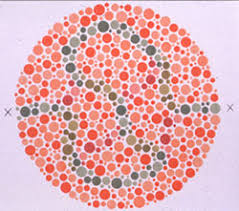Findings at FCSC Vancouver/Canada
So if the researchers are now saying Ultrasound is more
accurate what are we as the potential people to be examined
suppose to make of this new information. How could
previous screenings result therefore be considered accurate? -
i.e. many MRVs at locations without transcranial ultrasound in California????? uhm..
accurate what are we as the potential people to be examined
suppose to make of this new information. How could
previous screenings result therefore be considered accurate? -
i.e. many MRVs at locations without transcranial ultrasound in California????? uhm..
Hey Bob. Why do you think that the False Creek figures will be more reliable than those from Buffalo?Lyon wrote: Specifically I find False Creek info most interesting because, when they are comfortable with their CCSVI recognition numbers, my personal opinion is that those are going to be the most believable numbers we're going to hear in the foreseeable future.
Thanks!
Apologies for my terrible username. I never thought I'd use the forum much when I registered..
- cheerleader
- Family Elder
- Posts: 5361
- Joined: Mon Sep 10, 2007 2:00 pm
- Location: southern California
Venography will always be the final word. Once a doctor is inside a patient's veins with a catheter and radiation, the stenosis and reflux become crystal clear. The problem is with the methods currently available BEFORE venography. Dr. Zamboni created a very specific doppler and transcranial doppler protocol - his Italian ethics committee demanded that he have absolute proof of stenosis/reflux before putting patients thru invasive venography. Not many diagnostic centers have transcranial doppler, because they must be utilized by an MD, not a tech, and it's expensive.
Dr. Michael Dake, who I approached with the Zamboni research last year, did not have transcranial doppler at his disposal, so he utilized the best technology he had, doppler and magnetic resonance venography....BUT ONCE INSIDE the patient with venography is when the stenosis and reflux are precisely located and indicated. Interventional radiologists (IR) are doctors, like Dake, who use radiation to see inside veins and treat them with angioplasty or stents.
So, as far as treatment is concerned-the doppler vs. MRV discussion is not a giant issue, because the final procedure to treat CCSVI will involve venography.
We'll have more facts/reporting about the conference from a TIMS member who attended.
cheer
Dr. Michael Dake, who I approached with the Zamboni research last year, did not have transcranial doppler at his disposal, so he utilized the best technology he had, doppler and magnetic resonance venography....BUT ONCE INSIDE the patient with venography is when the stenosis and reflux are precisely located and indicated. Interventional radiologists (IR) are doctors, like Dake, who use radiation to see inside veins and treat them with angioplasty or stents.
So, as far as treatment is concerned-the doppler vs. MRV discussion is not a giant issue, because the final procedure to treat CCSVI will involve venography.
We'll have more facts/reporting about the conference from a TIMS member who attended.
cheer
Husband dx RRMS 3/07
dx dual jugular vein stenosis (CCSVI) 4/09
http://ccsviinms.blogspot.com
dx dual jugular vein stenosis (CCSVI) 4/09
http://ccsviinms.blogspot.com
- cheerleader
- Family Elder
- Posts: 5361
- Joined: Mon Sep 10, 2007 2:00 pm
- Location: southern California
Venography- which is when the catheter is introduced into the femoral vein and threaded up into the area of stenosis, is performed with a dye and x-ray machine. The IR docs wear heavy lead aprons to protect them from the radiation. Venography is NOT MRV....MRV uses an MRI machine and gadolinium and not radiation - magnetic resonance venography uses resonating pulses to view the veins.TFau wrote:Thanks Cheer!
They don't actually use some type of radiodiagnostic for the venography, do they? Is it only MR imaging, using magnets, with possibly a contrast agent?
Venography is necessary to treat CCSVI. It is the way that the veins can be opened with a balloon or stent. Read up more on venography if you still have questions.
cheer
Husband dx RRMS 3/07
dx dual jugular vein stenosis (CCSVI) 4/09
http://ccsviinms.blogspot.com
dx dual jugular vein stenosis (CCSVI) 4/09
http://ccsviinms.blogspot.com
- cheerleader
- Family Elder
- Posts: 5361
- Joined: Mon Sep 10, 2007 2:00 pm
- Location: southern California
thanks, T...he's still sleeping, which is good, but he's stable and woke up a couple times to say hello and tell us his head hurts...TFau wrote:Thanks, I appreciate that.
I hope your father is doing well!
He's a trooper.
Husband dx RRMS 3/07
dx dual jugular vein stenosis (CCSVI) 4/09
http://ccsviinms.blogspot.com
dx dual jugular vein stenosis (CCSVI) 4/09
http://ccsviinms.blogspot.com
But Bob, surely Buffalo's (non-profit) friends-with-Zamboni status is trumped by False Creek's financial incentive?
No idea exactly how positive Buffalo will be, but I've a feeling it will be on the positive side of positive, but I don't have any suspicion that they might be biased. Double blind is double blind, no?
No idea exactly how positive Buffalo will be, but I've a feeling it will be on the positive side of positive, but I don't have any suspicion that they might be biased. Double blind is double blind, no?
Apologies for my terrible username. I never thought I'd use the forum much when I registered..
I would have thought that differences in results would be down to the methodologies used and affiliations/vested interests would be irrelevant. And you're right, of course nothing's double blind..Lyon wrote:Don't get me wrong, I'm not saying that I have strong reason to disbelieve Buffalo's results but I am saying that in this case I find False Creek's financial incentive and skimpy relationships with others in the field a confidence booster.
Apologies for my terrible username. I never thought I'd use the forum much when I registered..

